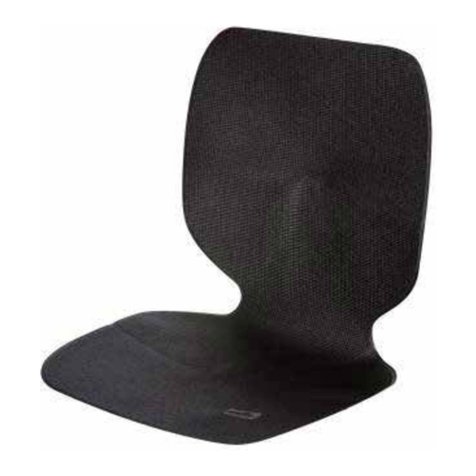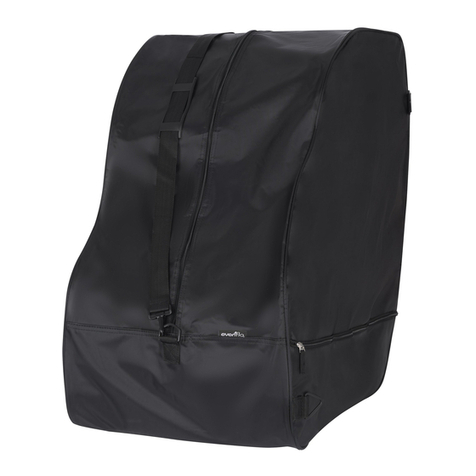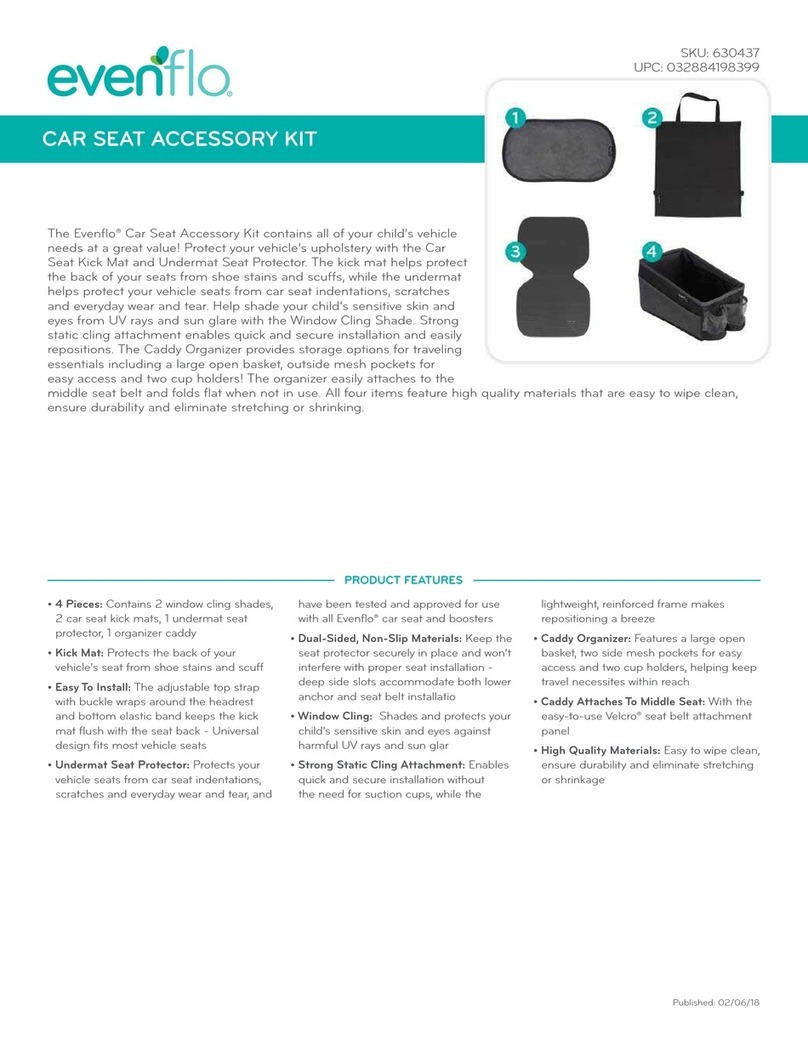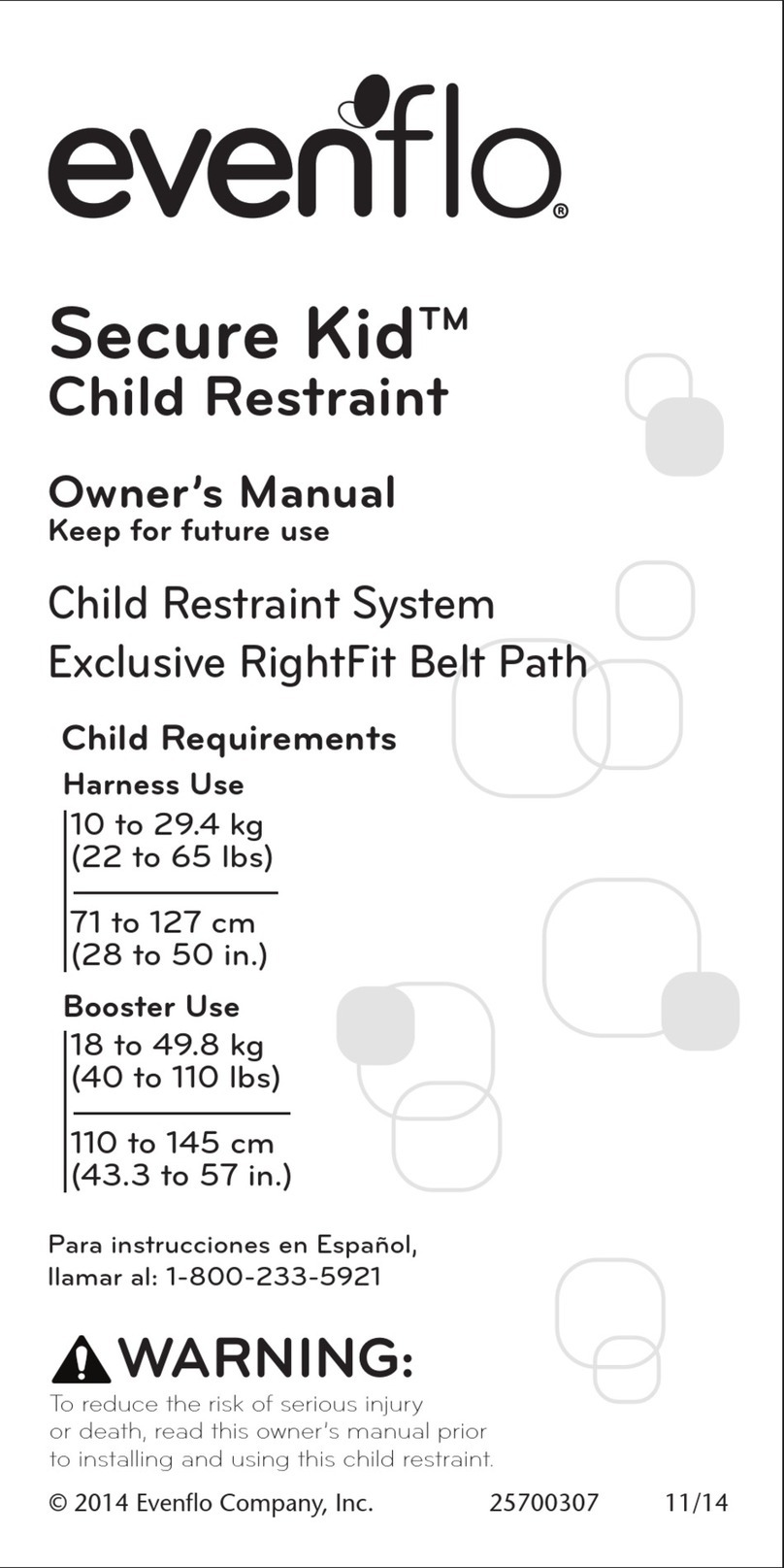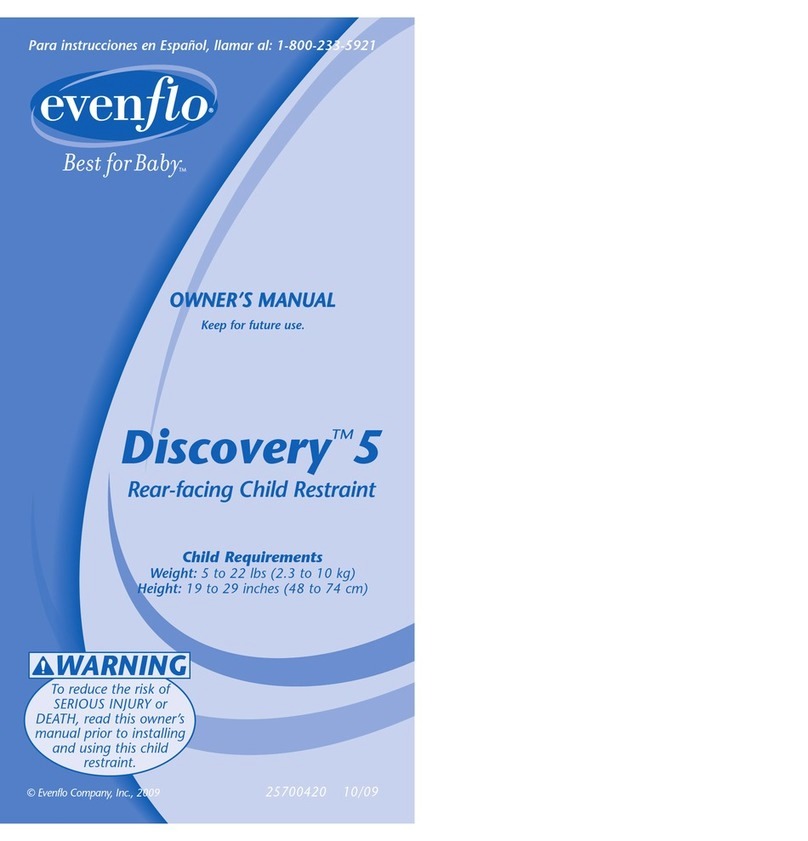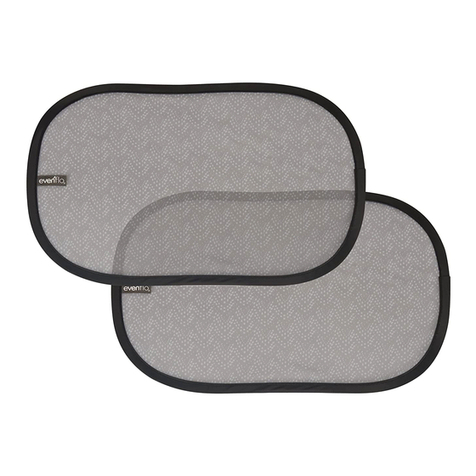2 3
CHILD REQUIREMENTS
Warning: Failure to follow these Child Requirements could result
in serious injury or death.
This child restraint is designed for use by children in both
rear-facing and forward-facing orientations. To use this
child restraint properly, children MUST meet the size and age
requirements below. In addition, Evenflo recommends consulting
with your child’s physician before allowing your child to transition
from rear-facing to forward-facing use of this child restraint.
The American Academy of Pediatrics (AAP) recommends keeping
children rear-facing until 2 years old or until they reach the
maximum height or weight for their child restraint in rear-facing
orientation. Additionally, some states’ laws require children to be
rear-facing until age 2. Accordingly, you will see this guidance
reflected in the Child Requirements below. Please review any
applicable local, state or provincial laws related to child passenger
safety before installing and using this child restraint.
Rear-facing
• 2.3 to 18 kg (5 to 40 lbs)
• 48 to 94 cm (19 to 37 in.) and top of child’s head is at least
25 mm (1 in.) below the top of the child restraint seat back
IMPORTANT: Once your child exceeds any of the size
requirements above, they MUST use this child restraint in the
forward-facing orientation, if possible. If your child exceeds
any of the size requirements above and is less than 2 years old,
however, you MUST discontinue use of this child restraint.
Forward-facing
• 10 to 18 kg (22 to 40 lbs)
• 71 to 102 cm (28 to 40 in.) and tops of the child’s ears are
at or below the top of the child restraint seat back
• At least 2 years old
IMPORTANT: Once your child exceeds any of the size
requirements for forward-facing use above, you MUST
discontinue use of this child restraint. Consider use of a booster
seat at that time.
Before using this child restraint for preterm or low birth
weight infants, ensure the Child Requirements are met
and follow the guidelines in this section.
According to the U.S. National Highway Traffic Safety
Administration, a properly installed child restraint
reduces the risk of death by over 70 percent for infants
involved in crashes. Federal Motor Vehicle Safety
Standard (FMVSS) 213 establishes design and dynamic
performance requirements for child restraint systems.
However, the standard has no minimum weight limit
and does not address the special medical needs of
preterm or low-birth weight infants. To ensure that
preterm and low-birth weight infants are transported
safely, the guidelines published by the American
Academy of Pediatrics (AAP) in Pediatrics 2009;
123:1424–1429 must be followed.
All children should ride rear-facing in the vehicle as
long as possible. Preterm and low-birth weight infants
are at additional risk of breathing difficulties and heart
problems when placed in a child restraint. Evenflo
requires that the evaluation recommended by the AAP
be conducted for all infants born earlier than 37 weeks
and all newborn infants who weigh less than 5 pounds
at birth before their first car trip to check for breathing
difficulties or heart rate problems when traveling in a
rear-facing child restraint.
The AAP recommends that appropriate hospital staff
observe your infant in the child restraint for a period of
90 to 120 minutes or the duration of travel, whichever
is longer. This period of observation must be performed
with the infant properly positioned as described in
these instructions and with the child restraint placed
at an angle that is approved for use in the vehicle. The
hospital staff will check for any breathing difficulties or
heart rate problems. Your child’s pediatrician will let you
know if there are any special considerations for travel.
The number of trips and the duration of time the infant
is seated in the child restraint should be minimized. A
caregiver should ride in the back seat to monitor the
infant during travel.
You can learn more about the AAP’s recommendations
for observation of newborns and the guidelines for safe
transportation of preterm and low-birth weight infants,
as well as other resources for parents and medical
professionals, at
https://www.healthychildren.org/english/safety-
prevention/on-the-go/Pages/default.aspx
PREMATURE INFANT USE
Important







